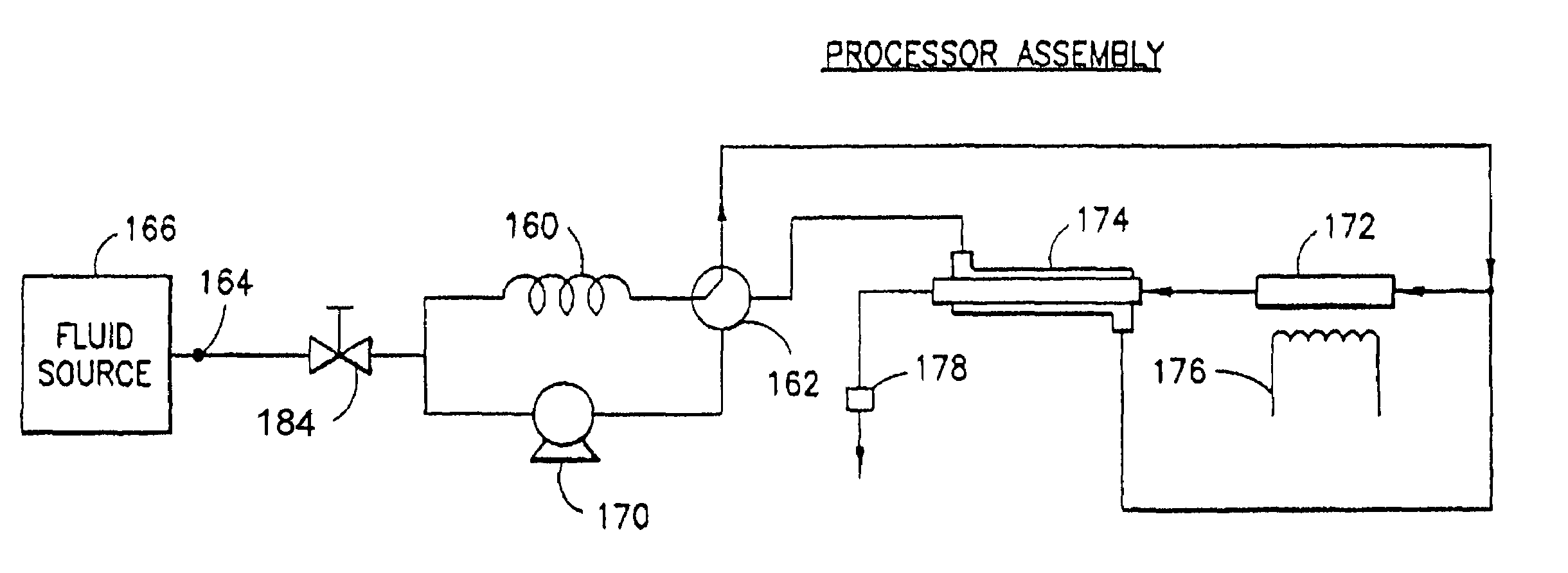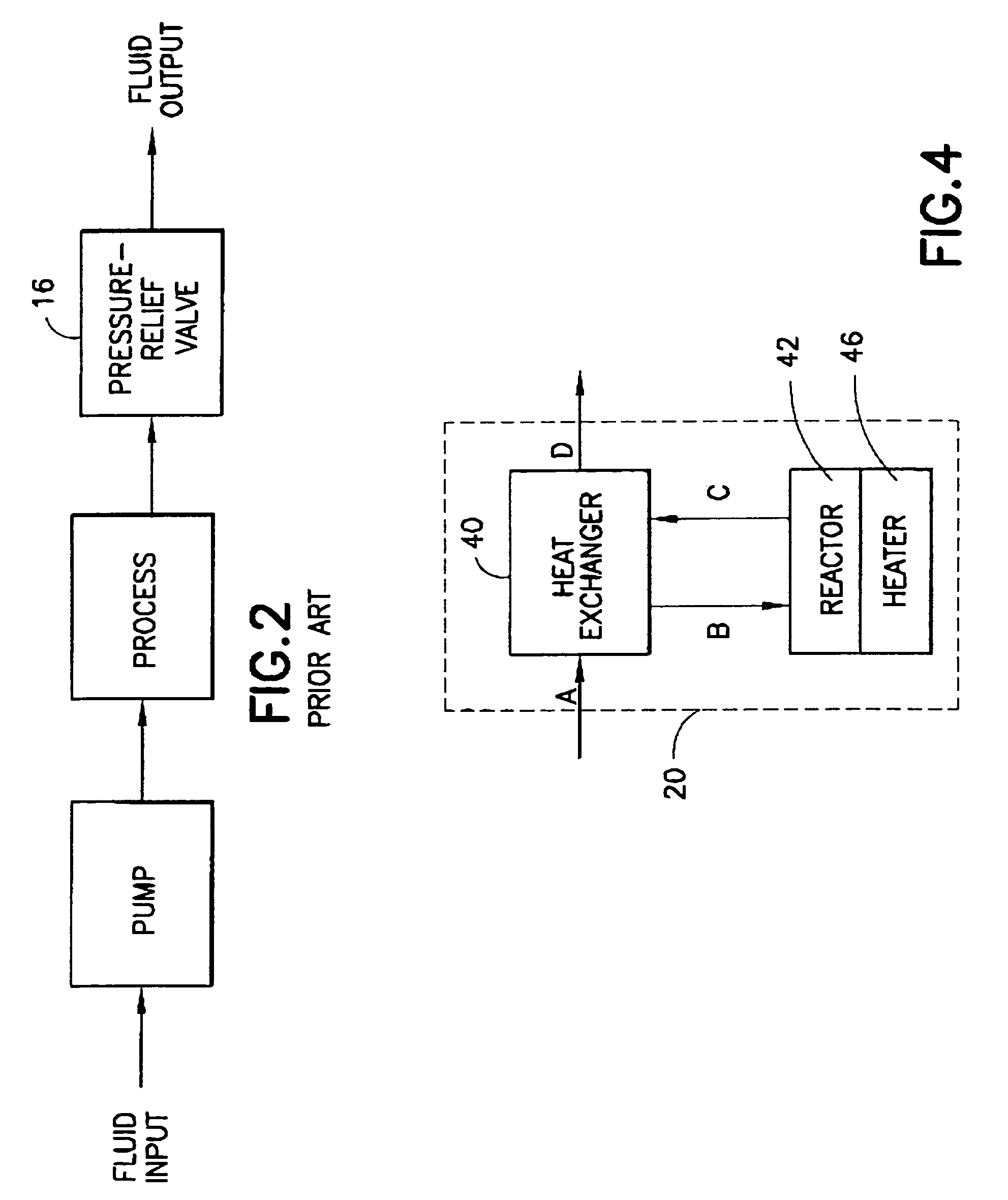Apparatus and method for continuous depyrogenation and production of sterile water for injection
a technology of pyrogenation and apparatus, which is applied in the direction of feed/discharge of settling tanks, water/sewage treatment by ion exchange, water/sewage treatment, etc., can solve the problems of system unsuitable for field use, pyrogens lose little of their potency, and swfi production is significant, etc., to achieve simple yet reliable process control system, reduce contact time for depyrogenation, and reduce the effect of pyrogenation
- Summary
- Abstract
- Description
- Claims
- Application Information
AI Technical Summary
Benefits of technology
Problems solved by technology
Method used
Image
Examples
Embodiment Construction
[0049]The apparatus and method of the present invention obtain a compact, reliable and easy to maintain and operate fluid processor having a low energy requirement that is suitable for depyrogenation and producing SWFI using HTP. A fluid processor in accordance with one embodiment of the present invention comprises a pump, a processor assembly, and a process control system comprising a flow splitter, a first and second flow restrictor, and a pressure relief valve. The process control system controls a fluid process by regulating the flow rate and pressure of the fluid within the fluid processor. Conduits (e.g., seamless tubing of stainless steel or other suitable alloys) transport the fluid between the different parts of the fluid processor. Brackets, clips or other devices commonly used in the industry hold components of the fluid processor in place.
[0050]The fluid processor is assembled from materials rated for the required temperature and pressure of the fluid process taking plac...
PUM
| Property | Measurement | Unit |
|---|---|---|
| Temperature | aaaaa | aaaaa |
| Pressure | aaaaa | aaaaa |
| Length | aaaaa | aaaaa |
Abstract
Description
Claims
Application Information
 Login to View More
Login to View More - R&D
- Intellectual Property
- Life Sciences
- Materials
- Tech Scout
- Unparalleled Data Quality
- Higher Quality Content
- 60% Fewer Hallucinations
Browse by: Latest US Patents, China's latest patents, Technical Efficacy Thesaurus, Application Domain, Technology Topic, Popular Technical Reports.
© 2025 PatSnap. All rights reserved.Legal|Privacy policy|Modern Slavery Act Transparency Statement|Sitemap|About US| Contact US: help@patsnap.com



